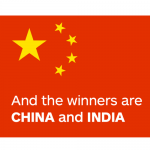Daintel – A Matter of Life and Death
Enjoying a fifty per cent market share by 2010, Daintel decided to expand their activities to international markets and hired a Chief Operational Officer to head up the operations. The endeavour was a complete failure, and four years later, Daintel stopped all international activities, laid-off the staff involved and was left with severe debt. The project almost killed the company.
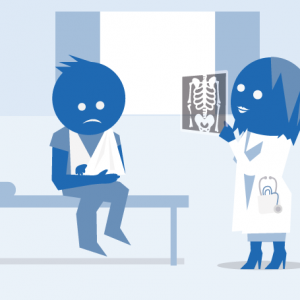
Life intensive care units (ICU) and operating rooms are, by definition, hectic and busy. Like no other places, what happens inside these rooms is a matter of life or death. They are sophisticated operational units that do not know precisely what they must produce today and tomorrow, what skills will be required and what equipment will be needed. The operation plan and procedures change continuously depending on the healing process of their current patients. Both managers and operators can benefit substantially from having access to real-time information on the current status of affairs, which kind of patients they currently have, which facilities and staff are available and when and which type of cases are in the queue. As health care units, they also need to provide detailed documentation for quality control purposes as well as delivering data to national databases for administration, benchmarking and statistical analysis.
The Daintel value proposition
Since 2004 Daintel has, from its base in Copenhagen, Denmark, specialised in developing IT-solutions for emergency and intensive care units solving the problems and challenges described above. They started at a time where the individual healthcare unit in Denmark had the authority to procure their own systems and succeeded in installing their system at over half the intensive care units in Danish hospitals.
The internationalisation challenges
Enjoying a fifty per cent local market share by 2010, Daintel decided to expand their activities to international markets and hired a Chief Operational Officer to head up the operations. The endeavour was a complete failure, and four years later, Daintel stopped all international activities, laid-off the staff involved and was left with severe debt. The project almost killed the company.
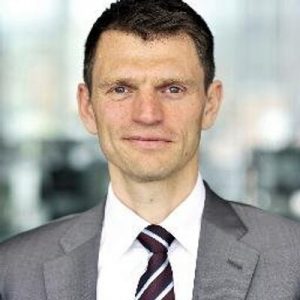
“In the years 2010-12 we participated in and won several entrepreneurship competitions,” explains Patrick Hulsen,” CEO and founder of Daintel. “I was continuously interviewed by the press, invited to deliver keynotes and was even featured in in-flight magazines. The hype around the company was substantial. We mistook this hype for market acceptance. Winning entrepreneurship competitions, delivering keynotes and getting press coverage can lead you to a kind of distorted reality. At least that’s what happened to us.”
The internationalisation project included penetrating Norway, Sweden, Germany, Switzerland and Brazil all at the same time.
“Brazil came on the plan because we met someone from that country, who convinced us of the opportunities available there,” says Patrick Hulsen. “We also managed to get a pilot project running before we fully realised what it would take in time and money to get the official approval for selling to Brazilian health care institutions. There was no way we were capable of supporting and financing such an approval process 10.000 kilometres and four time-zones away. Getting the approval was no guarantee that we could sell anything in the short-term anyway.”

Despite dedicated staff, investments and support from the Danish Trade Council and the Minister of Industrial Affairs, Daintel were not capable of winning a single international deal. And then the funding dried out.
The main reason for the failure was that Daintel underestimated the time and resources required for being accepted in a business driven by public procurement. In most countries, hospitals make all significant software solutions investments through a traditional procurement process, including a requirement specification, a request for proposal (RFP), a pre-qualification stage, a shortlist, a proof-of-concept demonstration and a final contract negotiation. Only if you are well known before the formal RFP is issued do you have a chance of influencing the specifications. Your chances of winning a public tender for a software solution coming out of the blue are very slim.
“The nominal sales process for our type of solution is never less than 24 months,” Patrick Hulsen continues, “and we have seen sales processes that took eight years. That’s a genuine challenge for a company coming from a small domestic market like Denmark. We do not have the market potential at home for building the kind of reserves it takes to win foreign markets in head-on competition with the local incumbents. Imagine investing four to five years before you win your first project in an environment where participating in each RFP cost you close to 1 million (DKK)!”
From 2014 to 2017 Daintel focused on recuperating the losses incurred by the first internationalisation attempt. An administrative reform in 2007 reduced the number of regions in Denmark from 14 to 5. This local reform began to impact how health care information systems were procured, making the domestic market for Daintel more difficult.
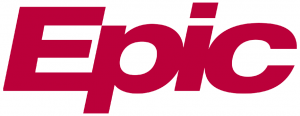
In early 2014 the Capital Region of Copenhagen and The Region of Zealand, which represents close to fifty per cent of the Danish population, decided to acquire a new integrated healthcare platform based on the American Epic EMR-system. This solution was to replace 17 Daintel installations in the two regions. Not because the Epic system was better for the IC-units, but because it was an integrated system that should replace all separate systems.
A new global go-to-market approach
In 2017 Daintel won a CIS-project in Iceland and in 2018 they were awarded a data connectivity project in Southern Jutland.
“These two projects are a result of our new go-to-market approach,” stresses Patrick Hulsen. “We are no longer the project lead, but the technology sub-contractor to a major player with an established international footprint. We are repeatedly reminded of our technological superiority, but we know that this is not enough. We have learned our lesson and now team up with companies that have the clout, the presence and the relationships required to win the deals.”
The market for healthcare information technology solutions are far from saturated, and the need for updating current systems is compelling, but the nature of the market makes customers conservative and cautious. It’s a very difficult market for small innovative insurgents.
“This time we start from the top,” reveals Patrick Hulsen. “I have identified four senior profiles for a new executive advisory board. Through their network, we will find the partners with whom we can gain entry to foreign markets without the need for massive up-front investments. The projects in Iceland and Southern Denmark have already opened doors to such alliances and we believe this to be a sound approach for a company such as ours.”
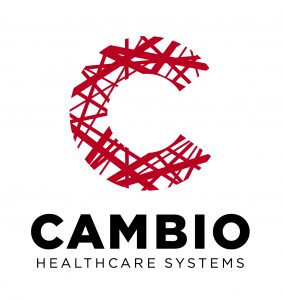
The project in Southern Denmark was won with Cambio as the lead contractor and Qualcomm as a second subcontractor. It is for a system collecting, filtering, archiving and retrieving patient data from medical devices in Intensive Care Units and Operating Rooms. Daintel will develop and deploy a “Connectivity Platform” collecting patient data from over 9.000 medical devices across all wards in all the region’s hospitals.
Daintel was acquired by Cambio in July 2019. The interviews with Patrick Hulsen was done in September 2018 and in March 2019.
This post is an excerpt from my upcoming book Going Global on a Shoestring.








